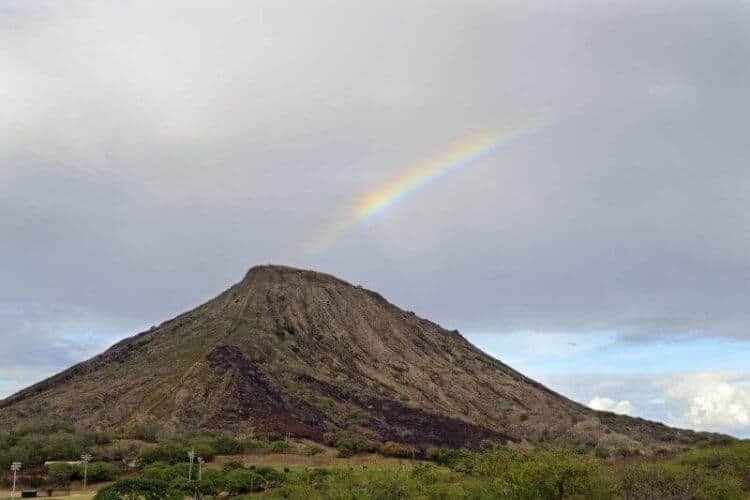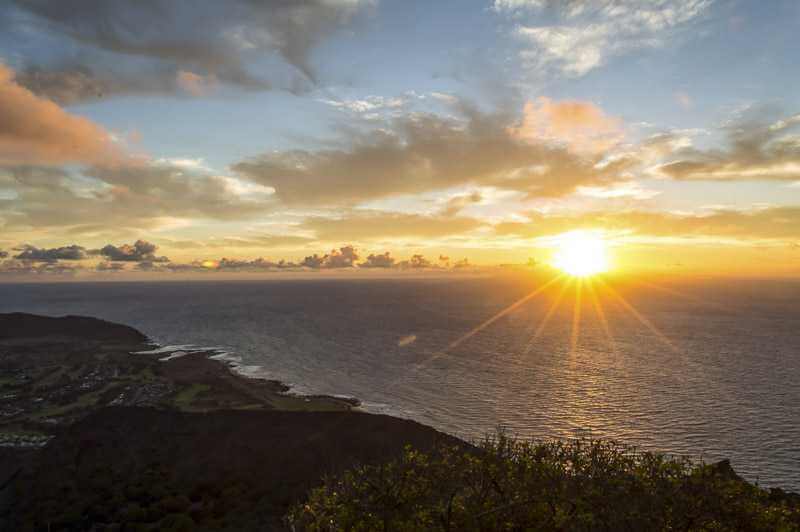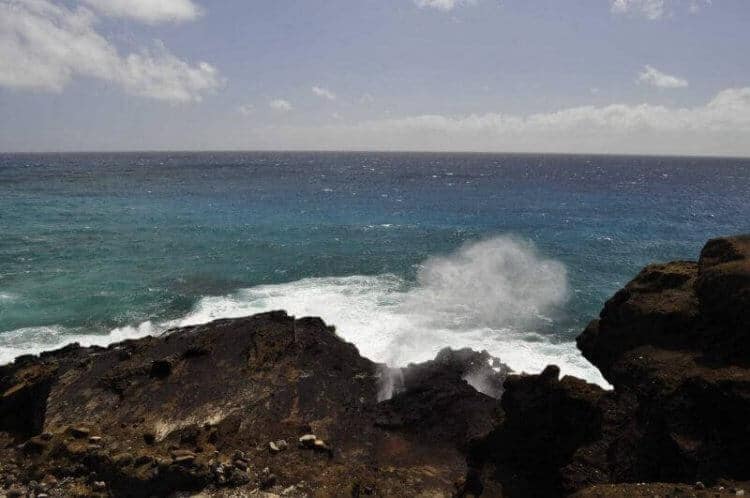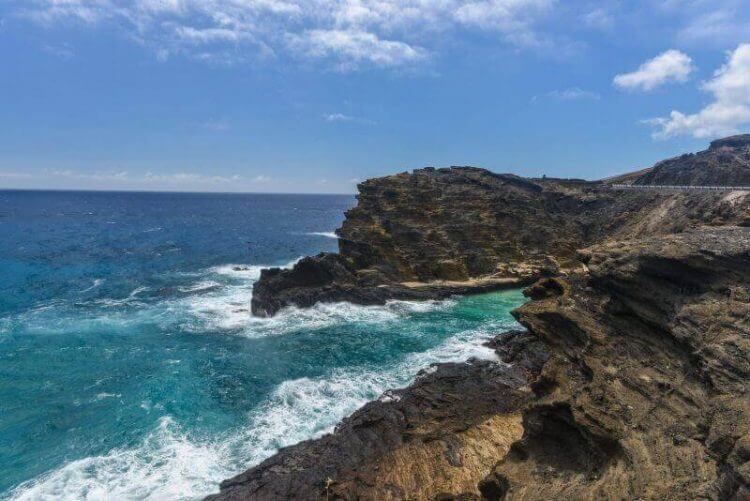Koko Crater is one the most popular landmarks on the south shore of Oʻahu. It’s classified as a cinder cone and it measures 1,208 feet high. Even from a distance one can see the hiking trail that leads to its peak. Getting to its peak, known as Lookout Point, means climbing 1,048 stairs. These stairs are actually railroad ties that were once part of the former Koko Crater radar station built by the U.S. Army in 1942-43.
During World War II, the railway track was used to haul military personnel and supplies to military bunkers at the top of Koko Crater. A gasoline-powered winch near the crest of the crater hoisted the tramcar. At the bottom of the crater was a base camp with barracks and a mess hall as well as buildings for equipment maintenance.

After the war, the facility was taken over by 169th Aircraft Control and Warning Squadron of the Hawaiʻi Air National Guard. A portion of the Koko Crater summit was also used for a microwave-link facility by the Federal Aviation Administration. In 1966 the Air Force inactivated the facility returning the tramway and the facilities at the summit to the City and County of Honolulu.
Today, Koko Crater is used as a fitness tool by kama`aina (locals) and tourists. The trail is considered challenging due to very steep stairs with sharp incline, but the views at the top are well worth the effort. At approximately halfway there is a bridge spanning a 10-15 foot gully. Those squeamish with heights may prefer the trail to the right which bypasses the gully. This hiking trail is also a great place to hydrate and catch your breath since it’s off the main path. Once at the top your reward is a breathtaking, 360 degree view of east Oʻahu, including Hawai’i Kai and Diamond Head. On clear days, the mountains of Moloka’i, Maui, and Lānaʻi can be seen in the distance.

Kohelepelepe, which means “labia minor” in the Hawaiian language, is Koko Crater’s second name. It got this name from an ancient legend. Pele (the volcano goddess) had several sisters. One of her sisters, Kapo, is said to have had a magical “flying vagina”. According to the legend, the pig god, Kamapua’a, tried to rape Pele. Kapo came to help her, distracting Kamapua’a by throwing her vagina to Koko Head, where it made the crater.
Another of Oʻahu’s must-see natural wonders and a spectacular visitor attraction is the Hālona Blowhole. Molten lava tubes from volcanic eruptions thousands of years ago formed this natural occurrence. The lava tubes run from the rock to the ocean and at high tide, on a windy day the water can shoot up to 30 feet in the air.

It’s important to note that there have been numerous accidents and even deaths here. It’s important to remember to adhere to the warning signs and not to get too close to the hole. In one such incident, an 18-year-old vacationing in Hawaiʻi with his family wanted to feel the water as it hit his chest. Moments later a powerful wave came and shot a blast of water through the blowhole while the young man was straddling it. He was launched five feet into the air and his body wasn’t found until the next day. Four others have been sucked into the blowhole; three did not survive to talk the story.

The Ka’iwi Channel, said to be one of the most unpredictable and dangerous ocean currents in the world, is located below Hālona. The Ka’iwi Channel is more commonly known as the “Moloka’i Express”. Legends say it has the power to carry the unwary swimmer all the way to Moloka’i. Each year outrigger canoes and paddlers make the treacherous journey from Moloka’i to Oʻahu in the Moloka’i Hoe canoe race.


